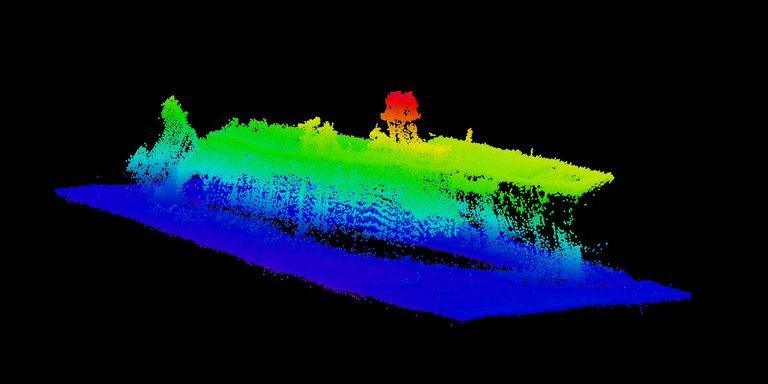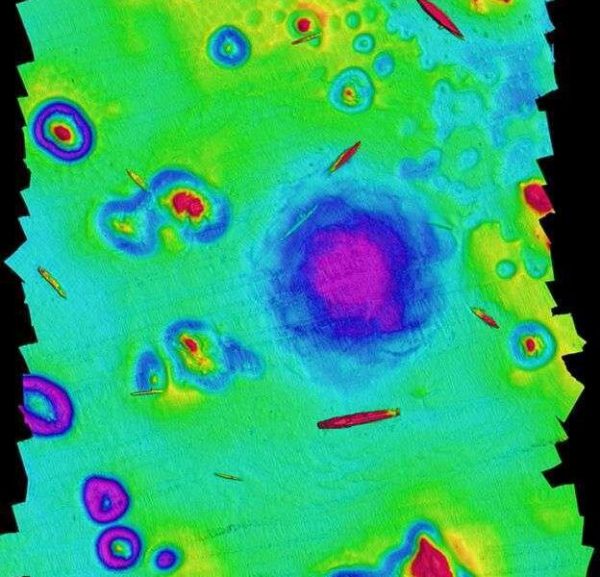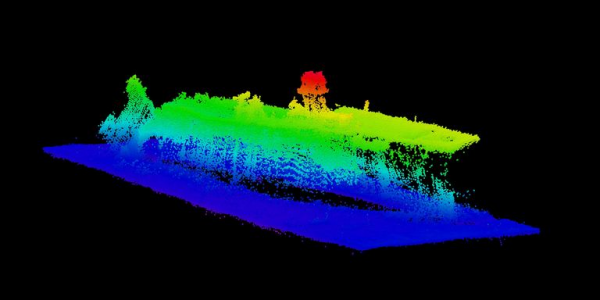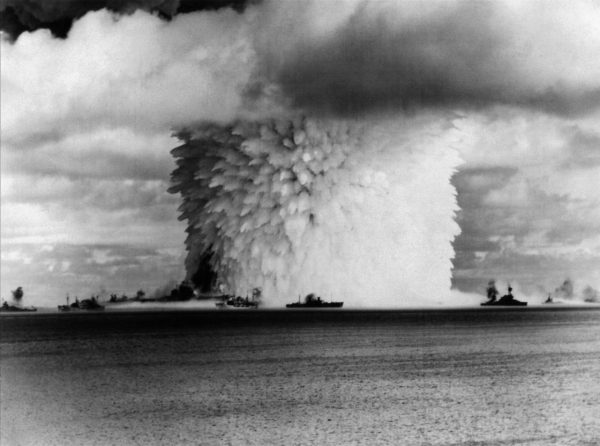Scientists Make Map Of 200-Foot Crater & Wrecks In Bikini Atoll Made By Nuclear Tests

It’s no secret that nuclear tests — no matter where they occur — ravage the surroundings where the blasts take place.
But those conducted in a remote region of the Pacific Ocean just after World War II continue to wreak havoc in the region, according to recent findings by the American Geophysical Union, which met in late December.
The tests, conducted between 1946 and 1954 near the Bikini Atoll, have marred the sea floor, destroyed coral reefs, and continue to leak poisonous material in the waters where they took place.
The union released images of the area it created using sonar. “It seems as if Captain Marvel herself has punched a hole in the planet and put a dent into it,” commented Dr. Art Trembanis, of the University of Delaware, in an interview with BBC-News.

“We wanted to draw back the curtain and be able to really reveal the scene.” He headed up a team of oceanographers, researchers, divers and other marine specialists to conduct the project.
And the scene they’ve revealed is, unfortunately, not an encouraging one.
Ships left over from the war, from Germany, Japan and America, were used to deliver the bombs, and all were destroyed during the blast. They are now rotting on the ocean floor, and one, in particular, is leaking toxic fuel. ”
The Nagato — which was the Japanese flagship that… was used to plan the attack on Pearl Harbour — had a streak of fuel coming from it for many miles,” Trembanis said.
Scientists create a digital map of 200-foot crater in #Bikini Atoll caused by first-ever underwater #nuclear explosion in 1946 US military test
A massive crater still punctuates the Bikini Atoll after nuclear tests during WWII pic.twitter.com/D00C83gKiF— Hans Solo (@thandojo) December 12, 2019
The blast displaced two million tons of water, and sent coral, sand and debris from the sea bed hurtling into the sky.
Trembanis anticipated that the wreckage would have been, by now, hidden by a thick layer of sediment after all these years, but instead they found an 800-metre wide depression in the ocean floor.
“We (used) advanced sonar technology; we (painted) the entire scene. It’s a bit like visiting the Grand Canyon with a flashlight verses going in the middle of the day and illuminating the whole area,” Trembanis continued. “…nature is still showing us this wound it received from the bomb.”

Unfortunately, the ships used to deliver the bombs were left operational, meaning they were equipped with weapons, ammunition and fuel.
The rotting of those is adding to the pollution problems the ships create, as well as the added problem of rust and leaking toxins. Had the ships been stripped before taking the bombs to the testing site, Trembanis suggested, these pollution problems may have been lessened.
“As the ships continue to disintegrate in the water,” he explained to the BBC, “this pollution (from weapons and fuels) could become a much bigger problem.
I could without looking up know when we were near the (US aircraft carrier) Saratoga, because we could smell the bunker fuel; it was so heavy and is still streaking out.”
It wasn’t just the sea bed that was inextricably altered by the tests, which culminated in 1954, when the largest nuclear test ever conducted by the United States was performed in the Marshall Islands.
It is the people who lived nearby, whose homes were ruined as they were displaced by the aftereffects of the bombs.
Some descendants of the people who lived there more than 60 years ago refuse to return, ignoring American assurances that the environment is now safe, according to an article in the guardian in 2014.
Scientists have never before been able to safely survey the region, and so people were cautious in their acceptance of bureaucratic answers to their questions.
In total, more than 20 bombs were tested in the region in those eight years.
It is easy to say with the benefit of hindsight, but it certainly seems that the American government was not equipped with enough information about the consequences to the ocean, to say nothing of the ships’ fate that delivered the bombs and what would happen to people in the area.

The question now is: how will the American government handle this new information provided by Trembanis and his team?
Another Article From Us: Antarctic Ice Sheets Leaking Radioactive Chlorine From 1950s Nuclear Weapon Tests
Will it endeavour to help the ocean, limit the damage, and perhaps remove some of the ships’ decaying hulls? The answers to those questions remain to be seen.
